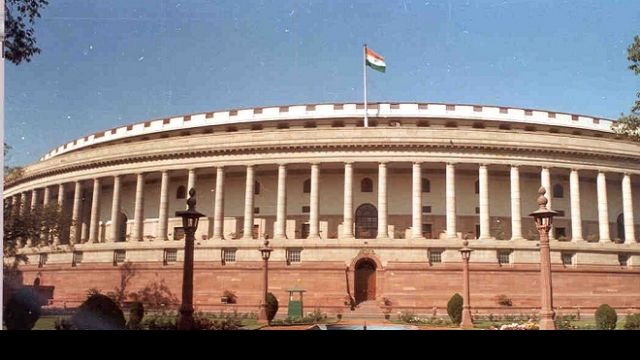In this article, Saurabh Kumar discusses the definition of the state and its overview in various judicial decisions.
INTRODUCTION
This article is an attempt to understand how the definition of the state, which in common parlance is termed “government”, has evolved over the years, being shaped by interpretation of constitutional statutes by different courts in different cases over a chronological set-up. It aims to further understand if the present definition is good enough or if further expansion is needed if such expansion will lead to a boom in the number of cases being filed.
Article 12 of the Indian constitution defines the following components as a state
- The Government of India or the Central government and the Parliament of India that is the houses of Lok Sabha and the Rajya Sabha.
- The state based governments and legislative bodies.
- Local Authorities like municipalities, panchayat, port trusts etc.
- All other authorities that are present in Indian Territory or are operating under the supervision of Indian governments.[1]
Of these, the last phrase of “other authorities” is a wide ranging term that has been a game changer and has been the topic of discussion in several cases which have laid down their own set of criterion for defining it like Rajasthan Electricity case[2], Sukh Dev VS Bhagat Ram etc[3]. This is a critical area when it comes to defining the state as it deals with a broad horizon and courts often have to strike a very delicate balance while deciding this serious aspect about defining states.
This definition has also been used in Article 36 (Part IV) that deals with the Directive Principles of State Policy[4], Article 152(Part VI) that deals with the functioning and handling of states[5] and Article 308 (Part XIV) that deals with services allocated under Union and States among others[6].
WHAT DOES THE CONCEPT OF EJUSDEM GENERIS SAY?
This is the Latin phrase for the expression “from the same generic group”. It was for the first time since the inception of the Indian state, that the Supreme Court was asked to formulate criterions to define “state”. This terminology was first used by Justice VS Ayyar Rajmannar in The University of Madras V Shanta Bai, in 1951, where he suggested that this term could be used for defining different bodies as the state only if they performed activities that could be termed as synonymous with government functions[7].
This phrase thus took into account anything that could be termed as “sovereign function” or any allied activity. It was not precise and included a great deal of subjectivity depending on the judges’ discretion. It is to be noticed that it is relatively a narrow term and was subsequently rejected in the Rajasthan Electricity case [8]but was later used by Justice Alagiri Swami in his dissenting opinion in Sukhdev V Bhagatram as he defined “sovereign functions”[9].
This term this was not widely recognized in Indian courts while dealing with the definition of the state. It can be attributed to the fact that this phrase is narrow and does not deal with the components that constitute a state in a wide manner.
Rejection of Ejusdem Generis by the Indian courts
This phrase was developed in the case of Electricity Board, Rajasthan, SEB V. Mohanlal (Rajasthan Electricity case) in the year 1967[10]. The concept of Ejusdem Generis was completely rejected for being incoherent and incomplete. The concept of “other authorities” including those that were created by statutes or laws and/or the constitution was rather approved. This was definitely a notch above the decision in Shantabai, it focused on granting of legal sanction behind any such body that could be termed as a state, its subsidiary or any other organization that could be termed to be performing any kind of governmental activity. But it is to be known that it could have brought in more precise terminology and increased the scope to include bodies that may not have been created by a statute or the constitution, but could be engaged in an important or related governmental activity by deputation. Thus, as compared to the concept of Ejusdem Generis, this term had a larger shelf life due to its clarity and greater acceptability[11].
SUKHDEV vs BHAGAT RAM(1975):
This case was decided in 1975 and can be termed as very important due to the three sets of judgments that emerged as a result of the judges having their own sets of opinions about the concept of what could be termed as a state[12].
The majority of Chief justice Ray, Justice Chandrachud and Justice Gupta in this constitutional bench decision that also consisted of Justices Matthew and Justice Alagiri Swami, partly agreed with the concept of statute or constitution created authorities as discussed in Rajasthan Electricity case and also added two other sets of criterion, that were[13]:
- The organization had the power to make rules and regulations that were considered as binding
- There was an existence of pervasive governmental control.
Thus, it was more comprehensive and did build upon the concept enshrined in Rajasthan Electricity case, but it again emphasized upon legal sanction, which is absent could lead to problems while pursuing meaningful legal remedies.
On the other hand, Justice Matthew gave a different but concurrent opinion on this topic, he suggested the following two tests to be taken cumulatively to consider something as the state, it included[14]:
- Instrumentality or agency of a state
- If the functions being performed could be seen as “public service”.
This set of functions can be termed as more inclusive and provide greater opportunity to include different sets of organizations within the ambit of the term “state”. It does not allow the need for creation by a statute or constitution but also takes into account the core fundamentals behind any such body. This was in addition to the decision of dissent given by Alaigiri Swami, but perhaps Matthew seems to be the most significant and logical one.
AJAY HASIA vs KHALID MUJIB(1981):
In 1981, Justice Bhagwati set six parameters for defining “public service”[15]-
- Whether the entire share capital is controlled by the government?
2) Whether financial assistance by the government is said to constitute almost the full expenditure incurred?
3) Whether the corporation enjoys any kind of monopoly that has been allotted or protected by the state?
4) Whether there is deep and pervasive state control?
5) If the functions of the body are of public importance and are closely related to governmental duties?
6) If there has been any transferring of any department of the government to this body?
There is a major fault line with this concept. It does not clarify if these functions work cumulatively, individually or in some sets or combinations. It is thus not precise and requires judges to decide at their discretion about availability or non-availability of some of these criterions.
DOCTRINE OF STATE ACTION
This concept was discussed in MC Mehta V Union of India; in the year 1986, it is originally enshrined in American constitution[16]. The logic behind this idea is that in cases where the extent of State aid, control and regulation involved in a private activity is so great so as to term it as State action. But, Justice Bhagwati felt that this concept did not suit Article 15 (2) of the constitution and thus there was a need to domesticate this concept and mold it as per Indian needs.
THREE POINT RULE
Ruma Pal’s opinion on what constitutes state is the latest and in a sense the most complete set of opinion in the case of Pradeep Kumar Biswas V Indian Institute of Chemical Biology in the year 2002[17]. This principle has eclipsed Ajay Hasia and was also used in the high profile case of Zee Telefilms V Union of India in 2006 that was dealing with if BCCI was a state, following the guidelines set by Ruma Pal it decided in the negative[18].
POSITION OF THE JUDICIARY
It was an issue of great debate if the judiciary should also be termed as a part of “state”. Since the independence of the judiciary from the other two wings of the state is also necessary to ensure its transparency and accountability, in the landmark case of Naresh Shridhar Mirajkar V State of Maharashtra, it was said that only administrative functions of the court can be termed as a state but not the judicial functions. This allows the judiciary to maintain its rightful autonomy from the state and thus allow independence in action, at least in theory[19].
CONCLUSION
Thus, after explaining in a timeline that has ranged from 1951 to 2005 and dealing with how this term has evolved over these years. The concept of state is a wide ranging one and has evolved over the years largely due to the judiciary’s interpretation of the phrase “other authorities” in Article 12 of the constitution. This concept has evolved over these years based on factors like judges’ interpretation, socio-economic factors involved etc. It has thus far not been a static idea in any way. The current concept of “other authorities” includes those bodies that are financial, functionally and administratively controlled by the government. as decided in the case of Pradeep Kumar Biswas V Indian Institute of Chemical Biology. This, I believe that the definition of “state” is expansive enough and there is no further need to improvise or add to this concept right now.
REFERENCES:
[1] The Constitution of India, Article 12.
[2] 1967 AIR 1857.
[3] AIR 1975 SC 1331.
[4] The Constitution of India, Article 36.
[5] The Constitution of India, Article 152.
[6] The Constitution of India, Article 308.
[7] AIR 1954 Mad 67.
[8] Supra note 2.
[9] Supra note 3.
[10] Supra note 8.
[11] Id.
[12] Supra note 9.
[13] Id.
[14] Id.
[15] 1981 AIR 487.
[16] 1987 AIR 1086.
[17] (2002) 5 SCC 111.
[18] AIR 2005 SC 2677.
[19] 1 1966 SCR (3) 744.















Thank you Sir, I am really happy you liked it 🙂
The explanation with examples for STATE DEFINITION IS PERFECT
Nice article, easy to understand. I as other than law graduate and being a common man very happy to read and understand. This is the way you have to create awareness of the law. Law knowledge must reach a Common man then we will enjoy the democracy.